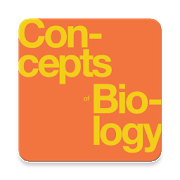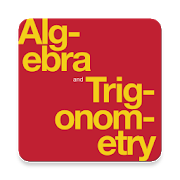QuizOver.com Apps
Precalculus Textbook, MCQ, Test Bank 2.1.1
Precalculus is adaptable and designed to fit the needs of avarietyof precalculus courses. It is a comprehensive text thatcovers moreground than a typical one- or two-semestercollege-levelprecalculus course. The content is organized byclearly-definedlearning objectives, and includes worked examplesthat demonstrateproblem-solving approaches in an accessible way. *CompleteTextbook by OpenStax * Multiple Choices Questions (MCQ) *EssayQuestions Flash Cards * Key-Terms Flash Cards PoweredbyQuizOver.com the leading online quizcreatorhttps://www.quizover.com 1. Functions Introduction toFunctions1.1. Functions and Function Notation 1.2. Domain and Range1.3.Rates of Change and Behavior of Graphs 1.4. CompositionofFunctions 1.5. Transformation of Functions 1.6. AbsoluteValueFunctions 1.7. Inverse Functions 2. Linear FunctionsIntroductionto Linear Functions 2.1. Linear Functions 2.2. Graphsof LinearFunctions 2.3. Modeling with Linear Functions 2.4. FittingLinearModels to Data 3. Polynomial and Rational FunctionsIntroduction toPolynomial and Rational Functions 3.1. ComplexNumbers 3.2.Quadratic Functions 3.3. Power Functions and PolynomialFunctions3.4. Graphs of Polynomial Functions 3.5. DividingPolynomials 3.6.Zeros of Polynomial Functions 3.7. RationalFunctions 3.8. Inversesand Radical Functions 3.9. Modeling UsingVariation 4. Exponentialand Logarithmic Functions Introduction toExponential andLogarithmic Functions 4.1. Exponential Functions4.2. Graphs ofExponential Functions 4.3. Logarithmic Functions 4.4.Graphs ofLogarithmic Functions 4.5. Logarithmic Properties 4.6.Exponentialand Logarithmic Equations 4.7. Exponential andLogarithmic Models4.8. Fitting Exponential Models to Data 5.Trigonometric FunctionsIntroduction to Trigonometric Functions 5.1.Angles 5.2. UnitCircle: Sine and Cosine Functions 5.3. The OtherTrigonometricFunctions 5.4. Right Triangle Trigonometry 6. PeriodicFunctionsIntroduction to Periodic Functions 6.1. Graphs of the SineandCosine Functions 6.2. Graphs of the Other TrigonometricFunctions6.3. Inverse Trigonometric Functions 7. TrigonometricIdentitiesand Equations Introduction to Trigonometric IdentitiesandEquations 7.1. Solving Trigonometric Equations with Identities7.2.Sum and Difference Identities 7.3. Double-Angle, Half-Angle,andReduction Formulas 7.4. Sum-to-Product and Product-to-SumFormulas7.5. Solving Trigonometric Equations 7.6. ModelingwithTrigonometric Equations 8. Further Applications ofTrigonometryIntroduction to Further Applications of Trigonometry8.1. Non-rightTriangles: Law of Sines 8.2. Non-right Triangles: Lawof Cosines8.3. Polar Coordinates 8.4. Polar Coordinates: Graphs8.5. PolarForm of Complex Numbers 8.6. Parametric Equations 8.7.ParametricEquations: Graphs 8.8. Vectors 9. Systems of EquationsandInequalities Introduction to Systems of Equations andInequalities9.1. Systems of Linear Equations: Two Variables 9.2.Systems ofLinear Equations: Three Variables 9.3. Systems ofNonlinearEquations and Inequalities: Two Variables 9.4. PartialFractions9.5. Matrices and Matrix Operations 9.6. Solving SystemswithGaussian Elimination 9.7. Solving Systems with Inverses9.8.Solving Systems with Cramer's Rule 10. AnalyticGeometryIntroduction to Analytic Geometry 10.1. The Ellipse 10.2.TheHyperbola 10.3. The Parabola 10.4. Rotation of Axes 10.5.ConicSections in Polar Coordinates 11. Sequences, ProbabilityandCounting Theory 11.1. Sequences and Their Notations11.2.Arithmetic Sequences 11.3. Geometric Sequences 11.4. SeriesandTheir Notations 11.5. Counting Principles 11.6. BinomialTheorem11.7. Probability 12. Introduction to Calculus 12.1.FindingLimits: Numerical and Graphical Approaches 12.2. FindingLimits:Properties of Limits 12.3. Continuity 12.4. Derivatives
College Physics AP Textbook, Test Bank 2.1.1
The AP Physics Collection is a free, turnkey solution for yourAP®Physics course, brought to you through a collaborationbetweenOpenStax and Rice Online Learning. The integratedcollectionfeatures the OpenStax College Physics for AP® Coursestext, ConceptTrailer videos, instructional videos, problem solutionvideos, anda correlation guide to help you align all of your freecontent. *Complete Textbook by OpenStax * Multiple ChoicesQuestions (MCQ) *Essay Questions Flash Cards * Key-Terms FlashCards Powered byQuizOver.com the leading online quizcreatorhttps://www.quizover.com 1. Introduction: The Nature ofScience andPhysics 1.1. Physics: An Introduction 1.2. PhysicalQuantities andUnits 1.3. Accuracy, Precision, and SignificantFigures 1.4.Approximation 2. Kinematics 2.1. Displacement 2.2.Vectors,Scalars, and Coordinate Systems 2.3. Time, Velocity, andSpeed 2.4.Acceleration 2.5. Motion Equations for ConstantAcceleration in OneDimension 2.6. Problem-Solving Basics for OneDimensionalKinematics 2.7. Falling Objects 2.8. Graphical Analysisof OneDimensional Motion 3. Two-Dimensional Kinematics 3.1.Kinematics inTwo Dimensions: An Introduction 3.2. Vector AdditionandSubtraction: Graphical Methods 3.3. Vector AdditionandSubtraction: Analytical Methods 3.4. Projectile Motion3.5.Addition of Velocities 4. Dynamics: Force and Newton's LawsofMotion 4.1. Development of Force Concept 4.2. Newton's First LawofMotion: Inertia 4.3. Newton's Second Law of Motion: Concept ofaSystem 4.4. Newton's Third Law of Motion: Symmetry in Forces4.5.Normal, Tension, and Other Examples of Force 4.6.Problem-SolvingStrategies 4.7. Further Applications of Newton'sLaws of Motion4.8. Extended Topic: The Four Basic Forces—AnIntroduction 5.Further Applications of Newton's Laws: Friction,Drag, andElasticity 5.1. Friction 5.2. Drag Forces 5.3. Elasticity:Stressand Strain 6. Gravitation and Uniform Circular Motion 6.1.RotationAngle and Angular Velocity 6.2. Centripetal Acceleration6.3.Centripetal Force 6.4. Fictitious Forces and Non-inertialFrames:The Coriolis Force 6.5. Newton's Universal Law ofGravitation 6.6.Satellites and Kepler's Laws: An Argument forSimplicity 7. Work,Energy, and Energy Resources 7.1. Work: TheScientific Definition7.2. Kinetic Energy and the Work-EnergyTheorem 7.3. GravitationalPotential Energy 7.4. Conservative Forcesand Potential Energy 7.5.Nonconservative Forces 7.6. Conservationof Energy 7.7. Power 7.8.Work, Energy, and Power in Humans 7.9.World Energy Use 8. LinearMomentum and Collisions 9. Statics andTorque 10. Rotational Motionand Angular Momentum 11. Fluid Statics12. Fluid Dynamics and ItsBiological and Medical Applications 13.Temperature, KineticTheory, and the Gas Laws 14. Heat and HeatTransfer Methods 15.Thermodynamics 16. Oscillatory Motion and Waves17. Physics ofHearing 18. Electric Charge and Electric Field 19.ElectricPotential and Electric Field 20. Electric Current,Resistance, andOhm's Law 21. Circuits, Bioelectricity, and DCInstruments 22.Magnetism 23. Electromagnetic Induction, ACCircuits, andElectrical Technologies 24. Electromagnetic Waves 25.GeometricOptics 26. Vision and Optical Instruments 27. Wave Optics28.Special Relativity 29. Introduction to Quantum Physics 30.AtomicPhysics 31. Radioactivity and Nuclear Physics 32.MedicalApplications of Nuclear Physics 33. Particle Physics 34.Frontiersof Physics
Physical Methods in Chemistry & Nano Science Book 2.1.1
Physical methods in chemistry & Nano Science TextBookbyOpenStax plus MCQ, Essay Questions & Key Terms *CompleteTextbook by OpenStax * Multiple Choices Questions (MCQ) *EssayQuestions Flash Cards * Key-Terms Flash Cards PoweredbyQuizOver.com the leading online quizcreatorhttps://www.quizover.com 0.1 Course introduction ElementalanalysisIntroduction to elemental analysis 1 Spot tests 2Introduction tocombustion analysis 3 Introduction to atomicabsorptionspectroscopy 4 Icp-aes analysis of nanoparticles 5 Icp-msfor tracemetal analysis 6 Ion selective electrode analysis 7 Apracticalintroduction to x-ray absorption spectroscopy 8 Neutronactivationanalysis (naa) 9 Total carbon analysis 10 An introductionto energydispersive x-ray spectroscopy 11 Auger electronspectroscopy 12Rutherford backscattering of thin films 13 Anaccuracy assessmentof the refinement of crystallographic positional14 Principles ofgamma-ray spectroscopy and applications in nuclearforensicsPhysical and thermal analysis Melting point analysis 1 Betsurfacearea analysis of nanoparticles 2 Dynamic light scattering3Viscosity 4 Differential scanning calorimetry (dsc) 5Electricalpermittivity characterization of aqueous solutions across6 Dynamicmechanical analysis 7 Finding a representativelithologyChromatography Principles of gas chromatography 1 Highperformanceliquid chromatography 2 Basic principles ofsupercritical fluidchromatography and supercrtical 3 Supercriticalfluidchromatography 4 Ion chromatography Chemical speciationEsi-qtof-mscoupled to hplc and its application for food safetyReactionskinetics and pathways Dynamic headspace gas chromatographyanalysis1 Gas chromatography analysis of the hydrodechlorinationreactionof 2 Temperature-programmed desorption mass spectroscopyapplied insurface Dynamic processes Nmr of dynamic systems: anoverview 1Determination of energetics of fluxional molecules by nmr2 Rollingmolecules on surfaces under stm imaging Molecular andsolid statestructure Crystal structure 1 Structures of element andcompoundsemiconductors 2 Low energy electron diffraction 3Neutrondiffraction 4 Circular dichroism spectroscopy and itsapplicationfor determination 5 Protein analysis using electrosprayionizationmass spectroscopy 6 The analysis of liquid crystal phasesusingpolarized optical microscopy Structure at the nanoscaleMicroparticle characterization via confocal microscopy 1Measuringthe specific surface area of nanoparticle suspensionsusing 2Characterization of graphene by raman spectroscopy3Characterization of covalently functionalized single-walledcarbon4 Characterization of bionanoparticles byelectrospray-differentialmobility Surface morphology and structureSem and its applicationsfor polymer science 1 Catalystcharacterization using thermalconductivity detector 2 Nanoparticledeposition studies using aquartz crystal microbalance Deviceperformance A simple testapparatus to verify the photoresponse ofexperimental 1 Measuringkey transport properties of fet devices
Software Engineering Textbook & Test bank 2.1.1
Software Engineering Textbook & Test Data bank *CompleteTextbook by OpenStax * Multiple Choices Questions (MCQ) *EssayQuestions Flash Cards * Key-Terms Flash Cards 1. Studentmanual 1.Syllabus 1.1. Assignment 1.2. Exercise 1.3. Project 1.4.Tools 2.Lecture notes 2.1. Software development process 2.2.Requirementsanalysis 2.3. Software design 2.4. Softwareconstruction 2.5.Software testing 2.6. Software maintenance 2.7.Softwareconfiguration management 2.8. Software quality management2.9.Software engineering management
Nanomaterials & Nanotechnology Textbook Test Bank 2.1.1
Nanomaterials and nanotechnology * Complete Textbook by OpenStax*Multiple Choices Questions (MCQ) * Essay Questions Flash Cards*Key-Terms Flash Cards Powered by QuizOver.com the leadingonlinequiz creator https://www.quizover.com 1. History ofnanotechnology1. The early history of nanotechnology 1.1.Buckyballs: theirhistory and discovery 1.2. Nanotechnology: marketgrowth andregional initiatives 2. Synthesis of nanomaterials 2.Introductionto nanoparticle synthesis 2.1. Carbon nanomaterials2.2. Graphene2.3. Oxide nanoparticles 2.4. Synthesis of magnetitenanoparticles2.5. Kitchen synthesis of nanorust 2.6. Semiconductornanoparticles2.7. Silver nanoparticles: a case study in cuttingedge research 3.Characterization of nanomaterials 3.1. Analysis 1.Icp-aes analysisof nanoparticles 1.1. Tga/dsc-ftir characterizationof oxidenanaoparticles 1.2. Thermogravimetric analysis of singlewalledcarbon nanotubes 1.3. Bet surface area analysis ofnanoparticles1.4. Measuring the specific surface area ofnanoparticlesuspensions using nmr 1.5. Dynamic light scattering1.6.Determining the chemical formula of nonstoichiometric ironoxidenanoparticles by mossbauer spectroscopy 1.7. Xafs analysisforarsenic adsorption onto iron oxides 1.8. Nanoparticledepositionstudies using a quartz crystal microbalance 3.2.Spectroscopy 2.Optical properties of group 12-16 (ii-vi)semiconductornanoparticles 2.1. Band gap measurement 2.2. Band gapmeasurementsof quantum dots 2.3. Using uv-vis for the detectionandcharacterization of silicon quantum dots 2.4. Characterizationofgroup 12-16 (ii-vi) semiconductor nanoparticles byuv-visiblespectroscopy 2.5. Characterization of covalentlyfunctionalizedsingle-walled carbon nanotubes 2.6. Characterizationofsingle-walled carbon nanotubes by raman spectroscopy2.7.Characterization of graphene by raman spectroscopy 2.8.Attenuatedtotal reflectance-fourier transform infrared spectroscopy2.9.Optical characterization of group 12-16 (ii-vi)semiconductornanoparticles by fluorescence spectroscopy 2.10. Xpsof carbonnanomaterials 2.11. Using xps to analyze metalnanoparticles 2.12.Mossbauer analysis of iron oxide nanoparticles2.13. Using 13-c nmrto study carbon nanomaterials 3.3. Microscopy3. Beyond opticalmicroscopy 3.1. Tem imaging of carbonnanomaterials 3.2.Transmission electron microscopy image formultilayer-nanomaterials3.3. Atomic force microscopy 3.4. Scanningtunneling microscopy ofnanomaterials 3.5. Rolling molecules onsurfaces under stm imaging3.6. The application of vsi (verticalscanning interferometry) tothe study of crystal surface processes4. Fundamentals fornanotechnology 4. Magnetics 4.1. Brownian motion4.2. Theory of asuperconducting quantum interference device (squid)4.3. Practicalguide to using a superconducting quantum interferencedevice





























